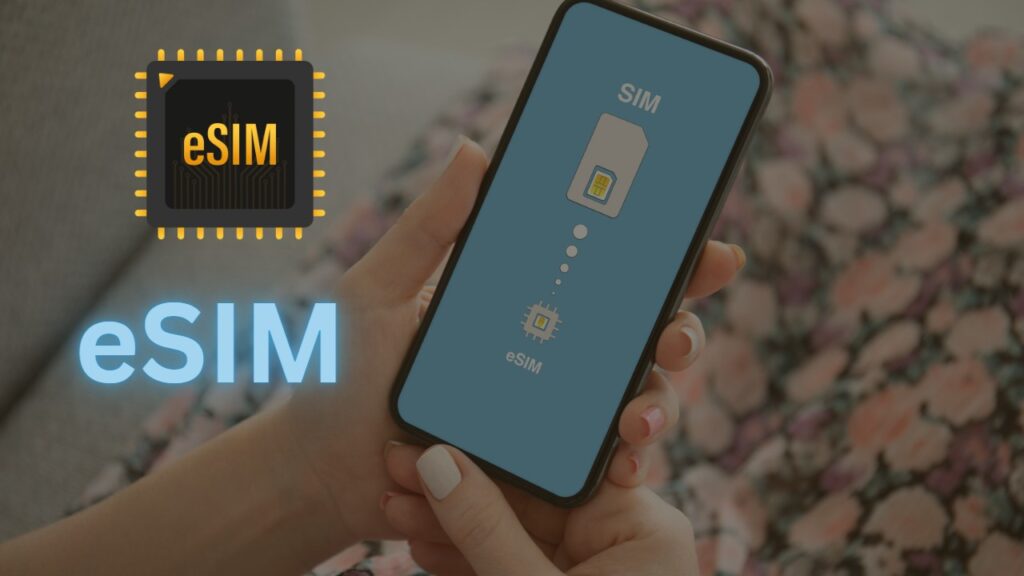As most people know, a SIM, or Subscriber Identification Module, is a unique number assigned to a device on a cellular network. When you activate a smartphone, tablet, or any other cellular device, the mobile provider associates the SIM number with your account. When you activate a smartphone, the SIM is also linked to your mobile phone number.

An eSIM, also known as an embedded SIM, is a SIM chip that is embedded directly into a device. Unlike traditional SIM cards that are physically removable, eSIMs are built into the device during manufacturing and cannot be taken out or swapped like their physical counterparts. Instead, they rely on digital technology to provide the necessary information to connect to a mobile network.
Table of Contents
How eSIMs Work
eSIMs use a small integrated chip that stores the necessary SIM card data, such as the International Mobile Subscriber Identity (IMSI) and other identifying information. This data can be securely programmed and remotely provisioned onto the eSIM by the network operator. It eliminates the need for a physical SIM card slot and simplifies the process of activating or switching between mobile networks.
When a device with an eSIM needs to connect to a mobile network, it communicates with the eSIM chip, which then establishes a connection with the network operator’s infrastructure. This process is facilitated through Over-The-Air (OTA) technology, allowing for remote provisioning, activation, and management of the eSIM. It provides users with greater flexibility and control over their cellular connectivity.
How does an eSIM differ from a SIM card? Well, a SIM card can be removed and used in different devices, but an eSIM is built into the device and cannot be taken out. This means that eSIMs can be reprogrammed to work with different cellular providers and can even store multiple SIM numbers at once.
Benefits of eSIMs
eSIMs offer several advantages over traditional SIM cards, making them an attractive option for consumers and businesses alike. Let’s explore some of the key benefits:
- Device Flexibility: With eSIMs, users can switch between different mobile network operators without needing to physically swap SIM cards. This feature is particularly useful for frequent travelers who can easily switch to a local network when visiting different countries.
- Smaller size – Generally, eSIMs take up less than one-third of the space compared to even the tiniest nano-SIM cards. As eSIMs are embedded directly into devices, they eliminate the need for a physical SIM card slot. This not only allows for sleeker device designs but also frees up valuable space for other components or features.
- Remote Provisioning: eSIMs can be remotely provisioned by network operators, which simplifies the activation process for users. They can activate a new eSIM or switch networks by simply scanning a QR code or using an app provided by the operator.
- Multiple Profiles: eSIMs have the capability to store multiple profiles simultaneously. This means that users can have multiple mobile network subscriptions on a single device, making it convenient for individuals who want to separate personal and business phone numbers or have different data plans for various purposes.
- Reliability and Security: eSIMs provide enhanced security features, such as tamper resistance and encryption. They are not susceptible to physical damage or loss like traditional SIM cards, reducing the risk of unauthorized access or SIM card cloning. If your phone gets lost or stolen, the person who finds it won’t be able to use your SIM card.
First Smartphone with eSIM Support
The Samsung Galaxy S8 is the first smartphone with an embedded SIM chip slot (called an “eSIM”), which permits users to switch carriers at any time without swapping out the device’s SIM card. Recent flagship phones all support eSIM.



